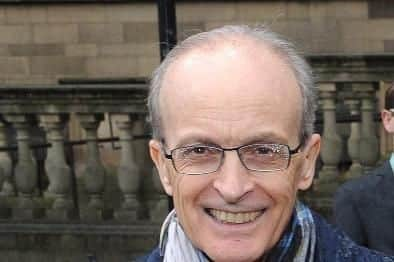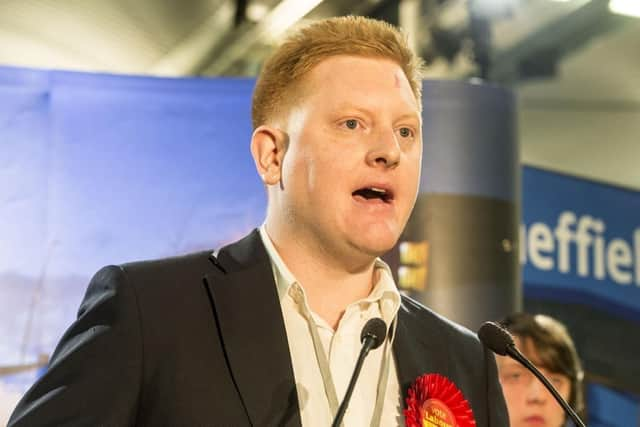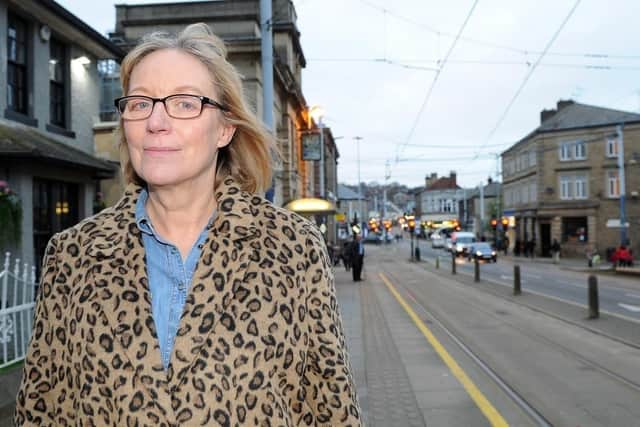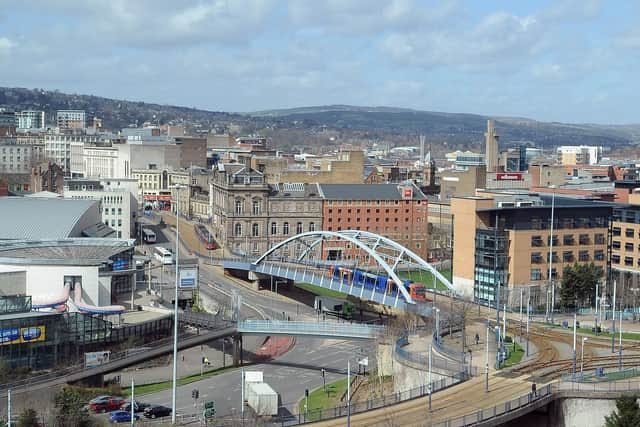TELEGRAPH VOICES: Is there an economic divide in Sheffield? Â


The study for New Statesman spin-off website CityMetric '“ which analyses trends in urban areas nationally '“  said the Steel City is divided into one side with '˜healthy, wealthy and leafy' suburbs like Fulwood, Ranmoor, Nether Edge and Dore and another side including areas like Upperthorpe, Hillsborough, Darnall and Attercliffe that are characterised by 'poverty, lack of opportunity, poor quality housing stock.'
For the latest Telegraph Voices feature we asked '˜Is there an economic divide in Sheffield?'Â Â


Â
Advertisement
Hide AdAdvertisement
Hide AdAlan Walker, professor of social policy and social gerontology at the University of Sheffield, who led the Sheffield Fairness Commission that looked into inequalities in the cityÂ
'˜Berlin Wall' as a depiction of the socio-economic division of Sheffield is misleading, but it does signal what all Sheffielders know: our city is divided.
On every important indicator those on the west side of the city are doing better, on average, than those on the central and east side.


For example, 30 per cent of children in the city live in poverty '“ a shocking enough statistic on its own '“ but in Burngreave it is a massive 50 per cent and, in Ecclesall, just eight per cent.
Advertisement
Hide AdAdvertisement
Hide AdAt the other end of the age scale women, on average, live 10 years longer in Ecclesall than they do in Burngreave.
These stark inequalities are not peculiar to Sheffield. What is different here is the sharp geographical divide: while Sheffield's inequality profile looks similar to Leeds, Newcastle or Nottingham, the division running north west to south east through the city is unique.
The most affluent parts of the city are Dore and Totley, Ecclesall and Fulwood, while the most deprived are Burngreave, Darnall, Firth Park and Manor Castle.


This is not to say that everyone living in those areas is either rich or poor, far from it, but poverty or affluence are much more prevalent in them than elsewhere in the city.
Advertisement
Hide AdAdvertisement
Hide AdMoreover the characterisation of the east of the city as being cut-off from the west and oppressed in political terms, suggested by the Berlin Wall analogy, is wrong.
There is strong identification with Sheffield on both sides of the socio-economic divide and pride in the city. In terms of engagement in city life, levels of volunteering are highest in the central/eastern wards. Nonetheless there is a powerful feeling in the most deprived parts of the city of being left behind, and it is this that underpins the Brexit vote.
This has historical roots in Sheffield's industrial heritage and subsequent economic development, but much of it is determined by government policies beyond the city's control.


This is clearly illustrated in the divisive impact of austerity, in which much larger cuts have been made to northern (Labour) authorities than southern (Conservative) ones, and where the welfare benefit cuts fall most heavily on the most deprived parts of the city and, therefore, increase inequality.
Advertisement
Hide AdAdvertisement
Hide AdCan the growing divide be reversed? This is extremely difficult in the face of highly divisive national policies, but the Sheffield Fairness Commission set out a 10-year strategy for social and economic inclusion and the city has made a start on it.
Meanwhile Sheffielders are taking their own steps to reduce the divide, as shown in the flow of food bank donations from west to east. Each of us should do what we can to bridge the divide.
Sheffield student Charlie Mcgrath
Every city has its share of more and less affluent neighbourhoods, but the geography of Sheffield makes the contrasts more noticeable. The more affluent south-west of the city bears little resemblance to the north-east.
I moved to the city to study just two years ago and already love the place. Like a lot of students, I live near the campus in Broomhill. There's nice shops, parks and restaurants from Tapas to Thai.
Advertisement
Hide AdAdvertisement
Hide AdBut while the people of Broomhill are planning a street party, the people of Upperthorpe '“ just a five-minute drive down the road - recently got together to discuss how to reduce crime on their streets. One resident said that many elderly people are too afraid to leave their homes at night after a fatal stabbing in the area in August.
A local youth worker said Upperthorpe's aspirational young people are being held back by a lack of job opportunities.
It doesn't help they're having to compete with children just a few miles away who are receiving a £13, 000 per year education at private schools.
The answer doesn't simply lie in '˜gentrifying' pockets of the industrial parts of the city. For example, a quick trip outside of Meadowhall to Attercliffe and Darnall will show you that visitors and their money stop within the shopping centre.
Advertisement
Hide AdAdvertisement
Hide AdThere are economic divides in this city but talk of a Berlin Wall between two halves is a headline grabbing exaggeration. You only have to speak with the passionate members of the many community groups to hear how people are putting their own time and money into improving these areas.
The city council is working on the issue, too. Money generated from new builds in the city will now be invested where it is most needed.
In the public consultation, residents in more affluent neighbourhoods like Fulwood overwhelmingly backed the proposal - even though they will lose funding.
It's an up-hill battle, but it's clear the people here care for one another and the appetite is there for a more united Sheffield.
Sheffield Brightside and Hillsborough MP Gill Furniss Â
Advertisement
Hide AdAdvertisement
Hide AdTen years on since the financial economic crash that shocked the world, my constituents in Sheffield, Brightside and Hillsborough are still feeling the effects despite having no part to play in causing the chaos.
The Government remedy to the crash was to impose austerity on working Britain's. Sheffield has been hit with some of the hardest Government cuts nationally and has seen half of its budgets cut since 2010, with further cuts pending.
This, coupled with the growth of short term zero hour contract and unaffordable housing are causing crisis in households in my community.
One of the worrying manifestations of the impact of eight years of Tory austerity and a bungled strategy on housing and jobs has been the severe rise in poverty and reliance on food banks.
Advertisement
Hide AdAdvertisement
Hide AdLast year, the Prime Minister told a nurse that '˜'there are many complex reasons why people go to foodbanks''. She was wrong.
It's clear from the conversations I have with my constituents, many of whom are in work but unable to make ends meet, that they visit food banks because they don't have money to cover their costs.
Over the year 2017-18 some 23, 000 3 day emergency food from the Trussell Trust food banks were supplied in South Yorkshire and this figure is set to grow.
I am further concerned by the upcoming roll-out of Universal Credit in our community which poses a further threat to people's livelihoods '“ it must immediately be halted and amended before it proceeds.
Sheffield Hallam MP Jared O'MaraÂ
Advertisement
Hide AdAdvertisement
Hide AdThere's a very good Ted Talk video about how, in so many cities across The Developed World, the eastern half is 'the wrong side of the tracks' and the western half is affluent.
Does this apply to Sheffield? Whilst the idea is not without merit, I feel it's something of an oversimplification.
I grew up in the north east of the city. First in Wincobank, then moving westward to Grenoside In Wincobank '“ there was no adjacent Meadowhall back then '“ but we had a little shop owned by Prince Naseem Hamed's family.
He'd become an inspiration to me as he successfully overcame disadvantage to become a champion, himself eventually moving westward to my Hallam constituency.
Advertisement
Hide AdAdvertisement
Hide AdMy parents' were baby boomers and had opportunities their millennial counterparts today do not.
Across Hallam there are many 'eastside' folk who moved further west across town, climbing the socio-economic and property ladders via graft, thrift and luck.
But there's also families from old money too. There's students at Endcliffe Village, young professionals in terraces at Crookes living next-door to pensioners retired from blue collar jobs such as our steel industry.
There's countless families of multiple generations started by erstwhile graduates that made Sheffield their home.
Advertisement
Hide AdAdvertisement
Hide AdThere's emigrants from all over who moved here for work or the Peaks.
And there's working class folk in various clusters of social housing and high rise flats at Stannington too.
Stereotypes and binary sociological generalisations, however compelling, are so often subject to innumerable anomalies.
What is true, however, is today's young people from the east don't have the same opportunities their counterparts in places like Fulwood and Totley have.
Advertisement
Hide AdAdvertisement
Hide AdSocial mobility is no more and our working classes have suffered immeasurably at the hands of corporate greed and inequality since the 2008 crash.
Austerity won't truly be over until 'eastside millenials' get free education, well paid jobs and a place on the property ladder, just like 'westside baby boomers'.'‹'‹'‹
